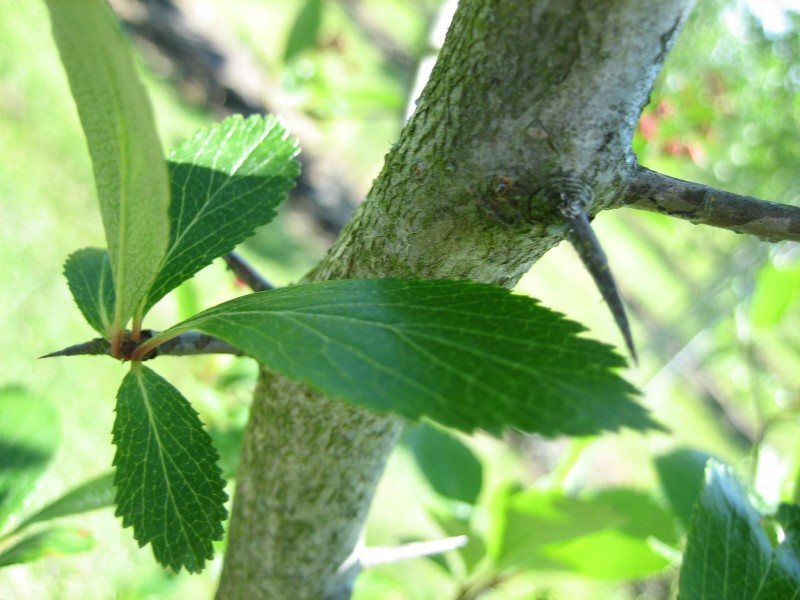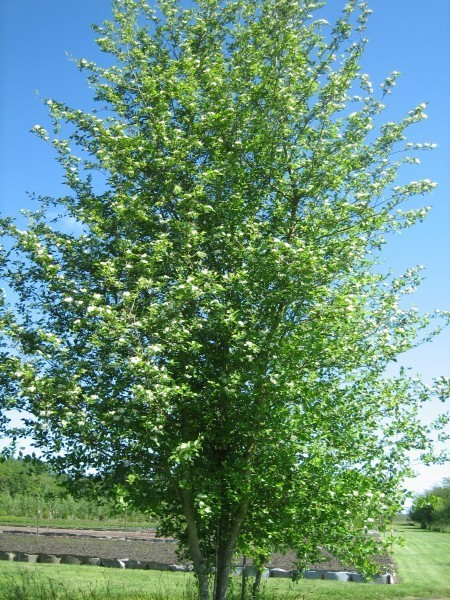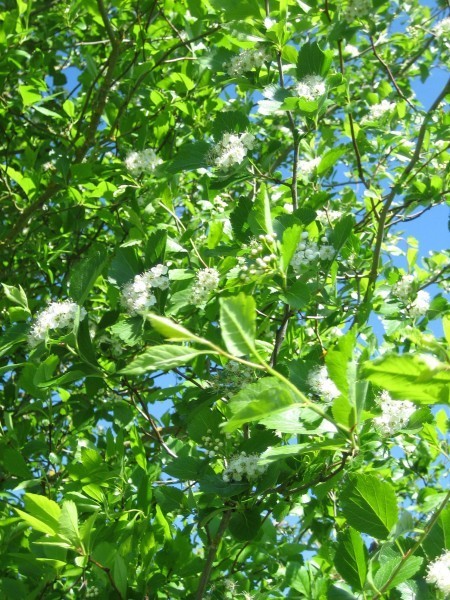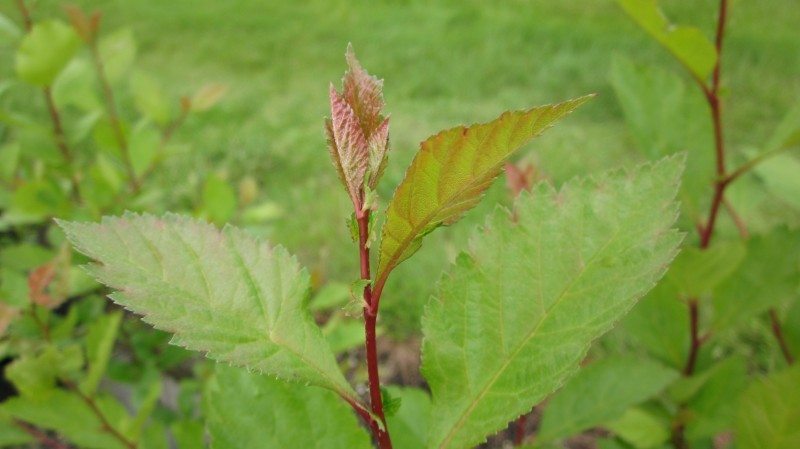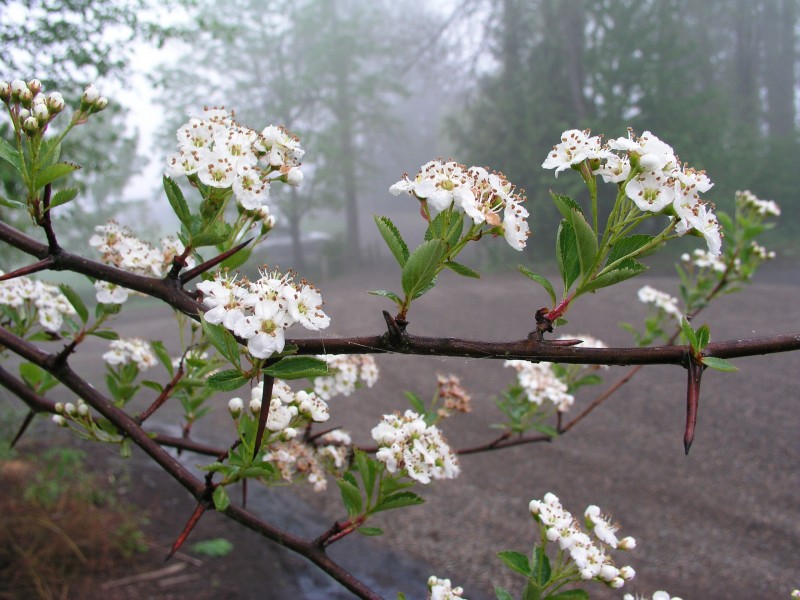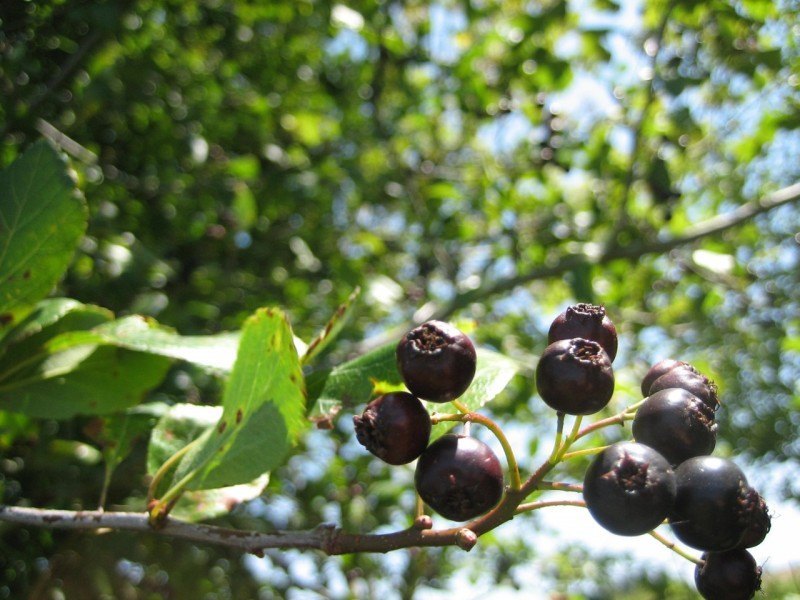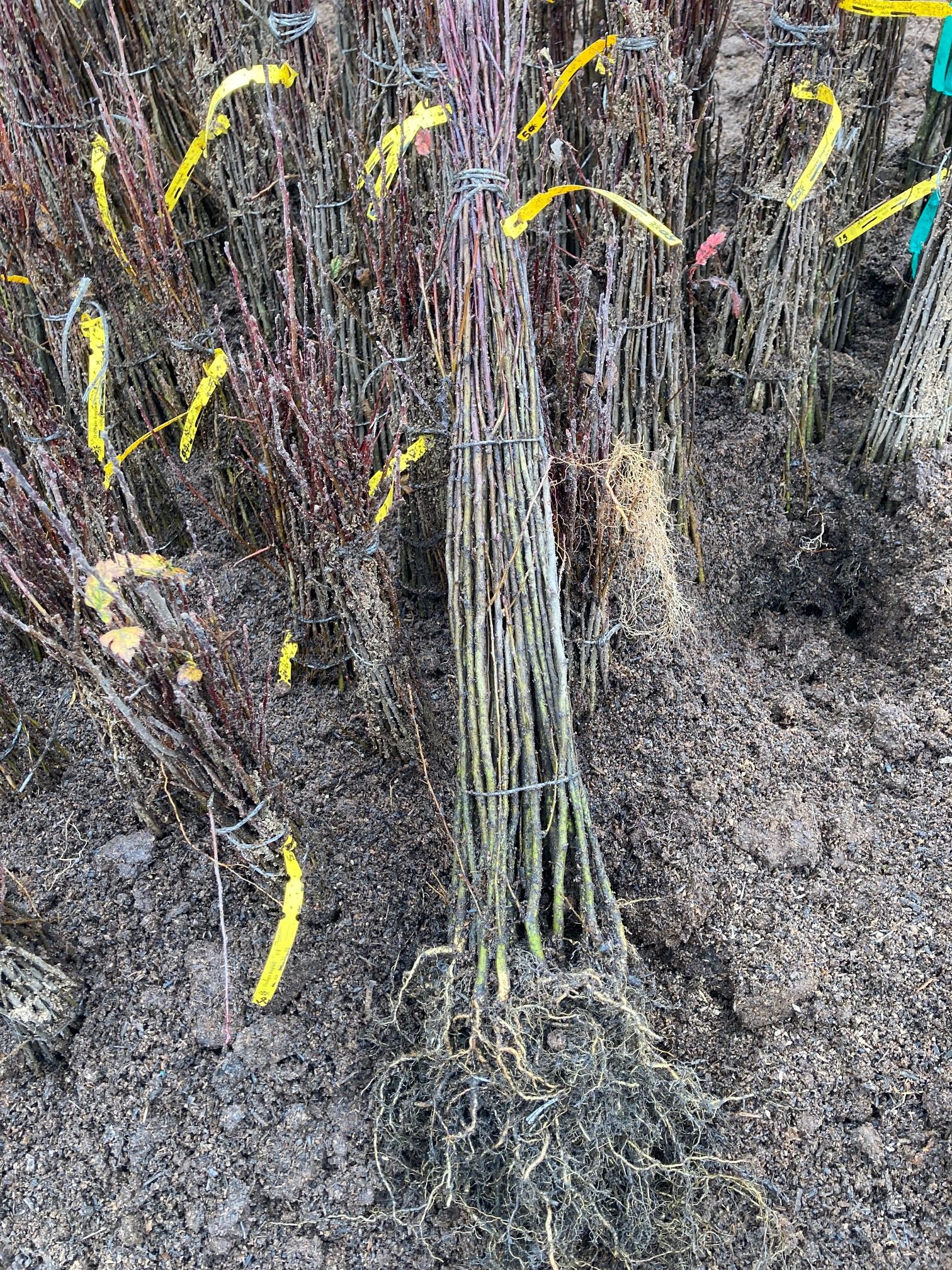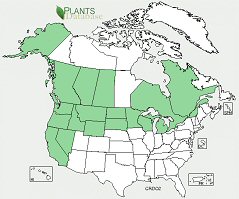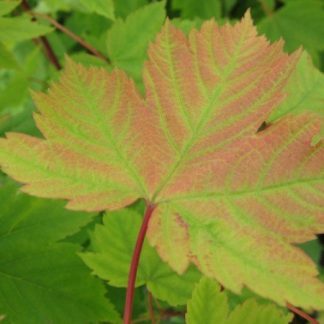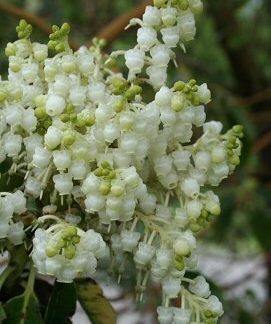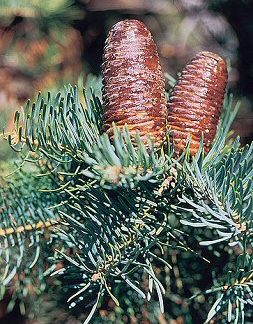Crataegus douglasii
Oregon black hawthorn
Habit: upright, bushy shrub/tree with a spreading rounded crown, coarse, gray bark, and smooth, red young twigs. Occasional stout thorns, 0.5-1 in (1-3cm) long, adorn the branches. Shiny, dark green leaves are oval, very slightly lobed with a double serrated margin near the tip and pale undersides. Flowers appear as white, globed shaped buds opening into clusters of 5-12 white flowers with greenish centers occurring terminally. Fruit is a small edible purplish-black berry. Blooms in spring. Leaves turn yellow, orange and red in autumn.
Ecology: found in the northern latitudes of North America, most abundant in the Pacific Northwest between elevations of 2200-5400 ft (670-1600 m). Oregon hawthorn is common in wetlands, open moist places, coastal bluffs, and slopes.
Growing Conditions: full sun to partial shade, moist to dry soil.
Fruits are edible, provides excellent food and shelter for wildlife. Crataegus douglasii is an excellent plant to use as a soil stabilizer and streambank erosion control, avoid using it in depleted soils.
Always seek advice from a professional before consuming or using a plant medicinally.
Specs
Deciduous Shrub/Tree
10-32 ft (3-10 m)
6-10 ft (2-3m)
4-9

